Ju Wang
Toward a Better Understanding of Fourier Neural Operators: Analysis and Improvement from a Spectral Perspective
Apr 10, 2024Abstract:In solving partial differential equations (PDEs), Fourier Neural Operators (FNOs) have exhibited notable effectiveness compared to Convolutional Neural Networks (CNNs). This paper presents clear empirical evidence through spectral analysis to elucidate the superiority of FNO over CNNs: FNO is significantly more capable of learning low-frequencies. This empirical evidence also unveils FNO's distinct low-frequency bias, which limits FNO's effectiveness in learning high-frequency information from PDE data. To tackle this challenge, we introduce SpecBoost, an ensemble learning framework that employs multiple FNOs to better capture high-frequency information. Specifically, a secondary FNO is utilized to learn the overlooked high-frequency information from the prediction residual of the initial FNO. Experiments demonstrate that SpecBoost noticeably enhances FNO's prediction accuracy on diverse PDE applications, achieving an up to 71% improvement.
Teacher-Student Architecture for Knowledge Distillation: A Survey
Aug 08, 2023



Abstract:Although Deep neural networks (DNNs) have shown a strong capacity to solve large-scale problems in many areas, such DNNs are hard to be deployed in real-world systems due to their voluminous parameters. To tackle this issue, Teacher-Student architectures were proposed, where simple student networks with a few parameters can achieve comparable performance to deep teacher networks with many parameters. Recently, Teacher-Student architectures have been effectively and widely embraced on various knowledge distillation (KD) objectives, including knowledge compression, knowledge expansion, knowledge adaptation, and knowledge enhancement. With the help of Teacher-Student architectures, current studies are able to achieve multiple distillation objectives through lightweight and generalized student networks. Different from existing KD surveys that primarily focus on knowledge compression, this survey first explores Teacher-Student architectures across multiple distillation objectives. This survey presents an introduction to various knowledge representations and their corresponding optimization objectives. Additionally, we provide a systematic overview of Teacher-Student architectures with representative learning algorithms and effective distillation schemes. This survey also summarizes recent applications of Teacher-Student architectures across multiple purposes, including classification, recognition, generation, ranking, and regression. Lastly, potential research directions in KD are investigated, focusing on architecture design, knowledge quality, and theoretical studies of regression-based learning, respectively. Through this comprehensive survey, industry practitioners and the academic community can gain valuable insights and guidelines for effectively designing, learning, and applying Teacher-Student architectures on various distillation objectives.
Multi-agent Attention Actor-Critic Algorithm for Load Balancing in Cellular Networks
Mar 14, 2023Abstract:In cellular networks, User Equipment (UE) handoff from one Base Station (BS) to another, giving rise to the load balancing problem among the BSs. To address this problem, BSs can work collaboratively to deliver a smooth migration (or handoff) and satisfy the UEs' service requirements. This paper formulates the load balancing problem as a Markov game and proposes a Robust Multi-agent Attention Actor-Critic (Robust-MA3C) algorithm that can facilitate collaboration among the BSs (i.e., agents). In particular, to solve the Markov game and find a Nash equilibrium policy, we embrace the idea of adopting a nature agent to model the system uncertainty. Moreover, we utilize the self-attention mechanism, which encourages high-performance BSs to assist low-performance BSs. In addition, we consider two types of schemes, which can facilitate load balancing for both active UEs and idle UEs. We carry out extensive evaluations by simulations, and simulation results illustrate that, compared to the state-of-the-art MARL methods, Robust-\ours~scheme can improve the overall performance by up to 45%.
Teacher-Student Architecture for Knowledge Learning: A Survey
Oct 28, 2022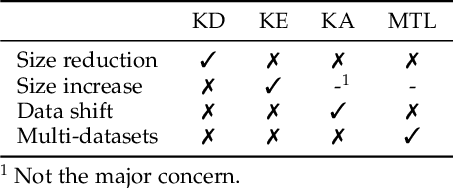
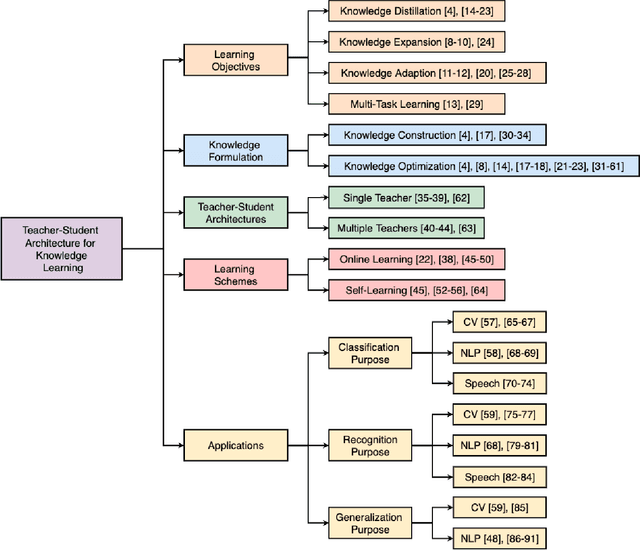
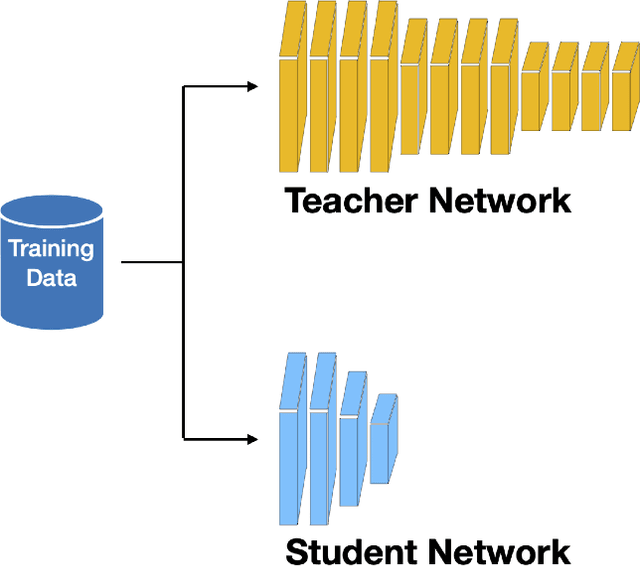
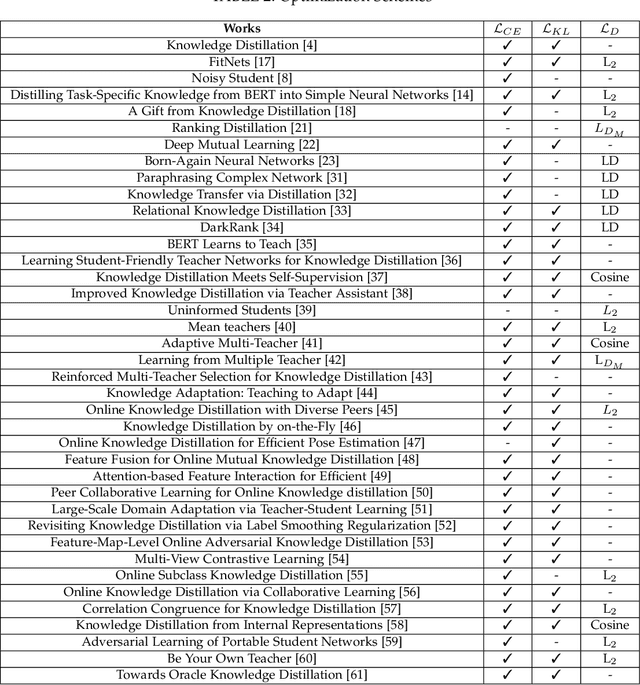
Abstract:Although Deep Neural Networks (DNNs) have shown a strong capacity to solve large-scale problems in many areas, such DNNs with voluminous parameters are hard to be deployed in a real-time system. To tackle this issue, Teacher-Student architectures were first utilized in knowledge distillation, where simple student networks can achieve comparable performance to deep teacher networks. Recently, Teacher-Student architectures have been effectively and widely embraced on various knowledge learning objectives, including knowledge distillation, knowledge expansion, knowledge adaption, and multi-task learning. With the help of Teacher-Student architectures, current studies are able to achieve multiple knowledge-learning objectives through lightweight and effective student networks. Different from the existing knowledge distillation surveys, this survey detailedly discusses Teacher-Student architectures with multiple knowledge learning objectives. In addition, we systematically introduce the knowledge construction and optimization process during the knowledge learning and then analyze various Teacher-Student architectures and effective learning schemes that have been leveraged to learn representative and robust knowledge. This paper also summarizes the latest applications of Teacher-Student architectures based on different purposes (i.e., classification, recognition, and generation). Finally, the potential research directions of knowledge learning are investigated on the Teacher-Student architecture design, the quality of knowledge, and the theoretical studies of regression-based learning, respectively. With this comprehensive survey, both industry practitioners and the academic community can learn insightful guidelines about Teacher-Student architectures on multiple knowledge learning objectives.
Detecting Soil Moisture Levels Using Battery-Free Wi-Fi Tag
Feb 04, 2022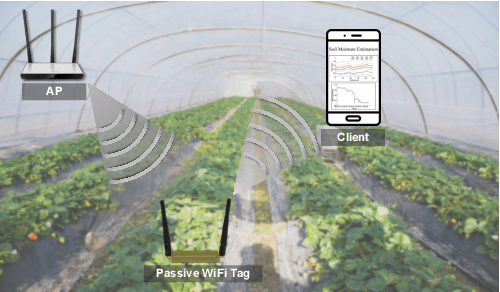

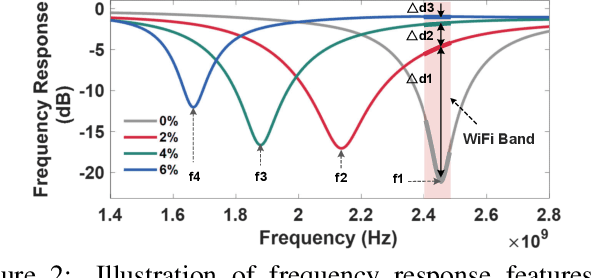
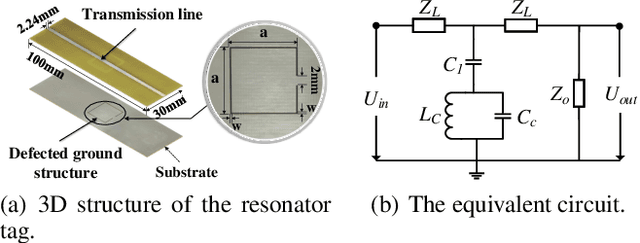
Abstract:Soil sensing plays an important role in increasing agricultural output and protecting soil sites. Existing soil sensing methods failed to achieve both high accuracy and low cost. In this paper, we design and implement a high-accuracy and low cost chipless soil moisture sensing system called SoilTAG. We propose a general chipless sensor design methodology which can allow us to customize the signal feature for sensing soil moisture, instead of blindly capturing the disturbance law of the soil. Based on this principle, we design a battery-free passive tag which can respond to different soil-moisture. Further, we optimize hardware and algorithm design of SoilTAG to locate the passive tag and extract its reflection signal feature to identify soil-moisture using WiFi signals. Extensive experimental results reveal that it can identify 2% absolute soil water content with a sensing distance up to 3m in open field. When the sensing distance is up to 13 m, it can also achieve 5% absolute soil-moisture sensing resolution.
AlphaFold Accelerates Artificial Intelligence Powered Drug Discovery: Efficient Discovery of a Novel Cyclin-dependent Kinase 20 (CDK20) Small Molecule Inhibitor
Jan 21, 2022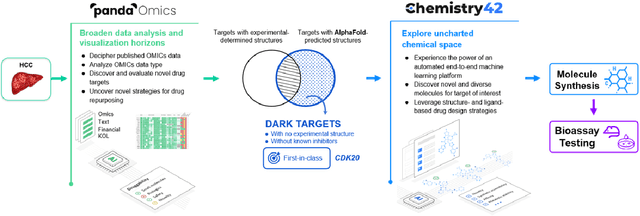

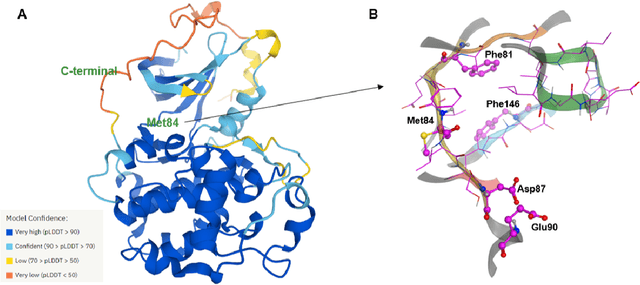
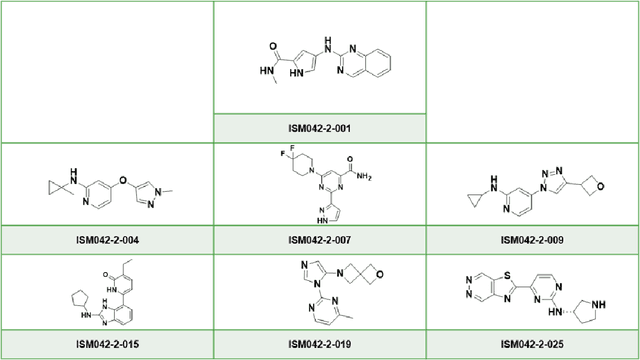
Abstract:The AlphaFold computer program predicted protein structures for the whole human genome, which has been considered as a remarkable breakthrough both in artificial intelligence (AI) application and structural biology. Despite the varying confidence level, these predicted structures still could significantly contribute to the structure-based drug design of novel targets, especially the ones with no or limited structural information. In this work, we successfully applied AlphaFold in our end-to-end AI-powered drug discovery engines constituted of a biocomputational platform PandaOmics and a generative chemistry platform Chemistry42, to identify a first-in-class hit molecule of a novel target without an experimental structure starting from target selection towards hit identification in a cost- and time-efficient manner. PandaOmics provided the targets of interest and Chemistry42 generated the molecules based on the AlphaFold predicted structure, and the selected molecules were synthesized and tested in biological assays. Through this approach, we identified a small molecule hit compound for CDK20 with a Kd value of 8.9 +/- 1.6 uM (n = 4) within 30 days from target selection and after only synthesizing 7 compounds. To the best of our knowledge, this is the first reported small molecule targeting CDK20 and more importantly, this work is the first demonstration of AlphaFold application in the hit identification process in early drug discovery.
 Add to Chrome
Add to Chrome Add to Firefox
Add to Firefox Add to Edge
Add to Edge